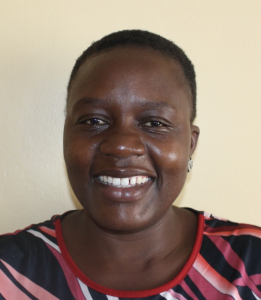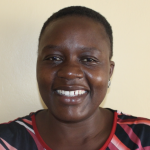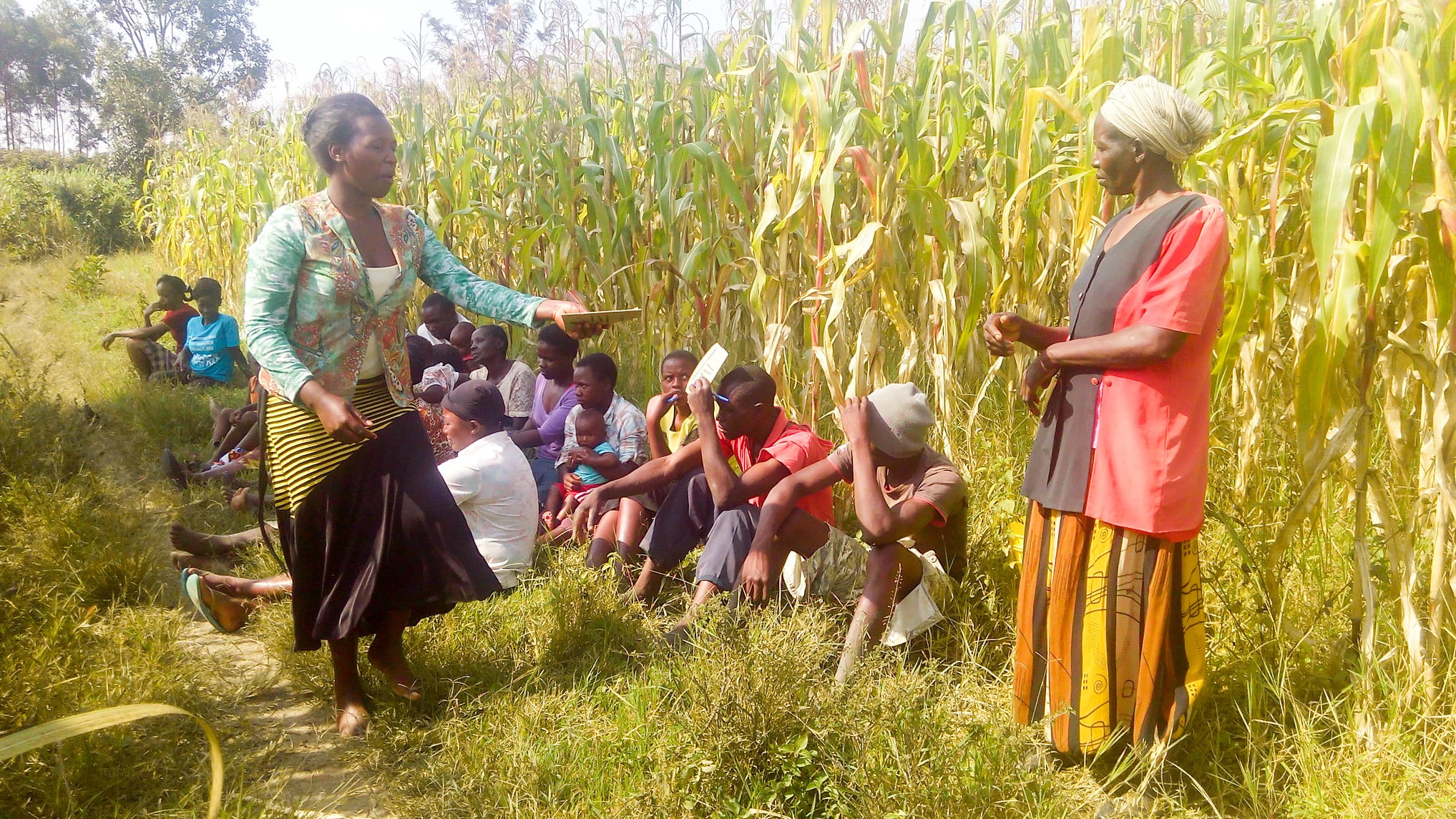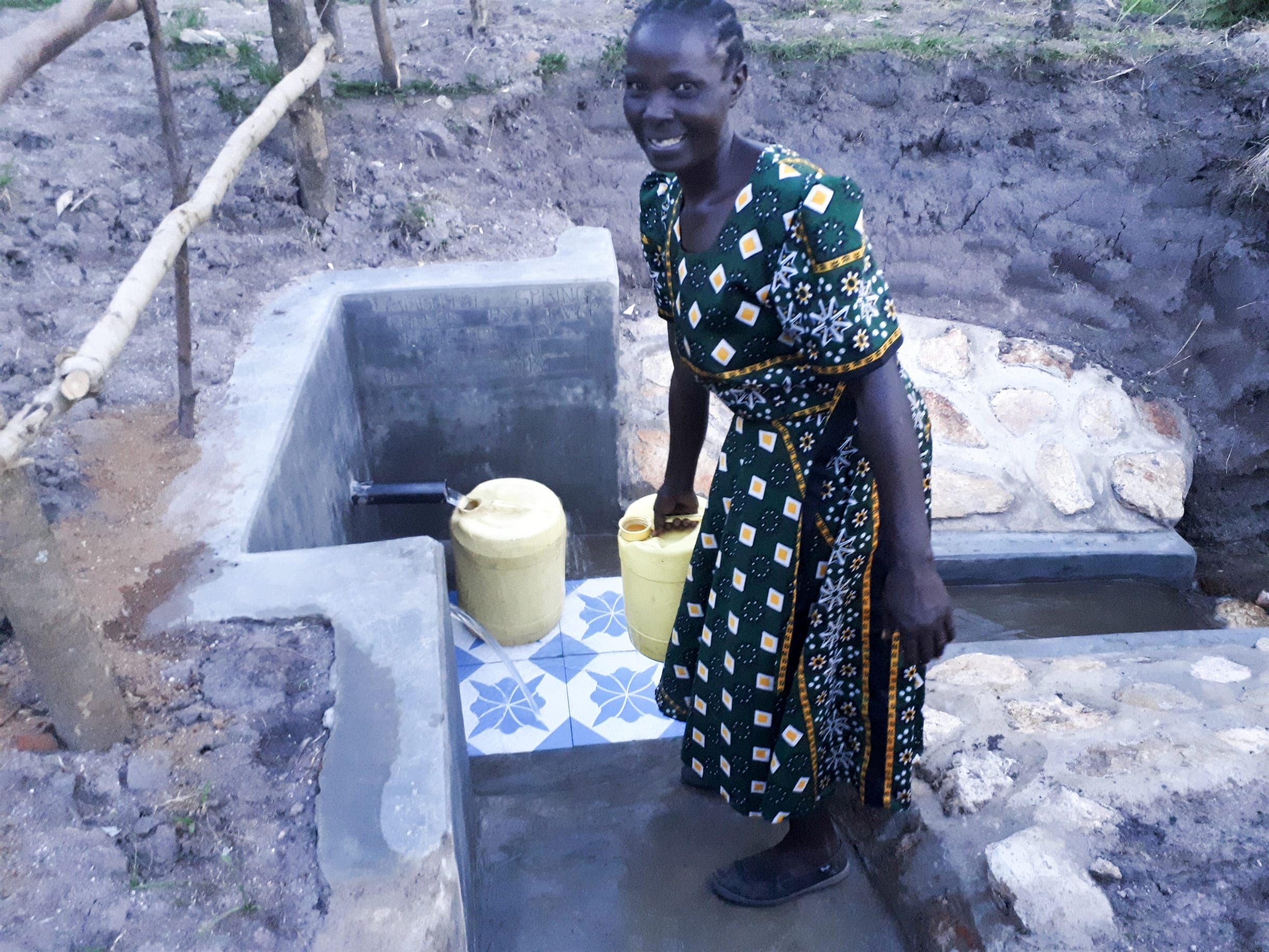It's about 7am and women are seen streaming to their spring to fetch water. Since the spring is located among the sugarcane plantations where visibility is low, these women fear walking to the spring when it's early and still dark.
One could count at least 20 different yellow jerrycans strewn around the spring area as women wait their turn in line. At this point, conflicts arise as the women who feel they've been waiting the longest are cut off by newcomers.
By 10am, the line at the spring subsides as women deliver their water back home to start their chores. More trips to the spring are required throughout the day as they cook for their families, water their gardens, and water their animals.
Men spend most of the day tending to sugarcane farms, working to get enough crop to sell to the local sugar factories.
There are at least 720 community members currently relying on dirty water from Wambutsi Spring. (Editor's Note: While this many people may have access on any given day, realistically a single water source can only support a population of 350-500 people. This community would be a good candidate for a second project in the future so adequate water is available. To learn more, click here.)
Water
Wambutsi Spring is the main water source for hundreds living in this area, which explains the long lines witnessed throughout the morning. Its water is used for drinking, cooking, cleaning, and irrigation. Containers are dunked right under the water's surface.
If the spring hasn't been used for a while, a little work needs to be done to clear algae and debris from the surface.
This water is completely open to contamination from the surrounding sugarcane plantations, from human and animal activities, and many other kinds of waste. After drinking this water, community members contend with waterborne diseases like typhoid.
"Each and every day the nightmare of water becomes greater and greater, especially on the rainy days as the water is completely dirty and we cannot fetch. Personally, my family has suffered attacks from typhoid twice this year and it's very costly. Spending over 3,000 shillings on treatment is no joke for us," Mrs. Lorna Wambutsi said.
Sanitation
Less than half of households have their own pit latrine. Most of these are made from mud, old sugar sacks, and tree leaves. Those who don't have their own latrine first borrow their neighbor's latrine, or else seek the privacy of bushes. Just a couple of these same families have a container of water for handwashing.
There are other tools like dish racks and clotheslines for drying belongings, but the majority of clothes and dishes are spread on the dirty ground.
Here’s what we’re going to do about it:
Training
Community members will attend hygiene and sanitation training for at least two days. This training will ensure participants have the knowledge they need about healthy practices and their importance. The facilitator plans to use PHAST (Participatory Hygiene and Sanitation Transformation), CLTS (Community-Led Total Sanitation), ABCD (Asset-Based Community Development), group discussions, handouts, and demonstrations at the spring. One of the most important topics we plan to cover is the handling, storage, and treatment of water. Having a clean water source will be extremely helpful, but it is useless if water gets contaminated by the time it’s consumed. Hand-washing will also be a big topic.
Training will also result in the formation of a committee that will oversee operations and maintenance at the spring. They will enforce proper behavior around the spring and delegate tasks that will help preserve the site, such as building a fence and digging proper drainage. The fence will keep out destructive animals, and the drainage will keep the area’s mosquito population at a minimum.
Sanitation Platforms
On the final day of training, participants will select five families that should benefit from new latrine floors.
Training will also inform the community and selected families on what they need to contribute to make this project a success. They must mobilize locally available materials, such as bricks, clean sand, hardcore, and ballast. The five families chosen for sanitation platforms must prepare by sinking a pit for the sanitation platforms to be placed over. All community members must work together to make sure that accommodations and food are always provided for the work teams.
Spring Protection
Protecting the spring will ensure that the water is safe, adequate and secure. Construction will keep surface runoff and other contaminants out of the water. With the community’s high involvement in the process, there should be a good sense of responsibility and ownership for the new clean water source.
Fetching water is predominantly a female role, done by both women and young girls. Protecting the spring and offering training and support will, therefore, help empower the female members of the community by giving them more time and efforts to engage and invest in income-generating activities.
This project is a part of our shared program with Western Water And Sanitation Forum (WEWASAFO). Our team is pleased to provide the reports for this project (edited for readability) thanks to the hard work of our friends in Kenya.

 Protected Spring
Protected Spring
 Rehabilitation Project
Rehabilitation Project































